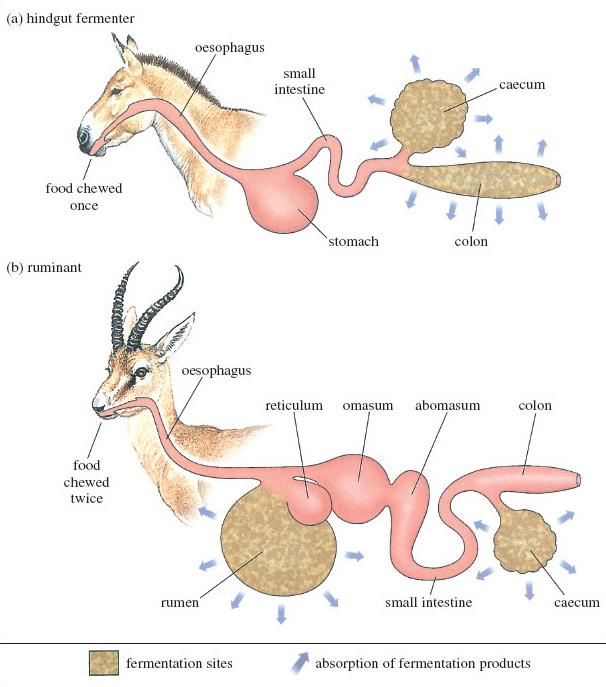The difference between ruminant and non-ruminant
- Ruminants are animals which have 4 chambered stomach specially designed for digesting plant matter (roughages).
- Their stomach are design to digest course hard to break down being plants like grass, non-protein (which make up meat) which is much easier to digest for the average animals. They regurgitate food called chewing the cud.
- The rumen acts the huge fermentation vat where animal amino acid and protein are made by the bacteria in the rumen from the basic forages the animal has consumed.
- Ruminant’s animals are much more efficient in forming plant matter into high quality meat. Animals which are ruminant includes all bovine- cattle, buffalos, sheep and goat.
- Non ruminant are considered monogastric because they have simple stomach. They cannot regurgitate partly digested matter and re chewed.
- They do not have large rumen. Almost all non-ruminants are omnivorous or carnivorous.

|
Ruminant |
Non-ruminant |
|
They have 4- chambered stomach. |
They have simple stomach, simple and partly digested, monogastric. |
|
Most of the digestion and absorption takes place in stomach. |
Most of the digestion and absorption on small intestine (duodenum, jejunum, ileum). |
|
Regurgitation occurs or rumination take place. They regurgitate food called chewing the cud. |
Regurgitation not occurs, absence of rumen or do not chewed the cud. |
|
Stomach is divided into 4 parts, rumen, reticulum, omasum, abomasum |
Only one i.e. abomasum |
|
Can digest cellulose with the help of cellulose bacteria. |
Cannot digest cellulose. |
|
Microbial digestion of cellulose occurs in rumen and reticulum |
Microbial digestion occurs in caecum and colon |
|
Manufacture essential protein and Vitamin themselves |
Unable to manufacture should be supply externally |
|
Ptyalin is absent in saliva. |
Ptyalin is present in saliva. |
|
Essential amino acid and protein is not supplied in feed. |
Essential amino acid and protein is required in feed, supplied in feed. |
|
Canine teeth absent |
Present |
|
Horns are present |
Generally absent |
|
Intestine is situated in flat position in stomach |
In zigzag position |
|
Complete digestion takes place. |
Partial digestion |
|
Saliva contain N, P and Na |
Absent of N, P and Na in saliva |
|
Long intestine (about 100) ft. |
Not so longer |
|
Essential amino acid is not required in feed crude protein provide in feed |
Should be supplied from external source |
|
Caeca and colon is fully develop |
Develop or not develop e.g. in human caeca and colon is not developed, caeca, colon develop in horse and rabbit, swine |
|
They can survive by roughages |
They cannot survive green roughages also need to survive concentrates. |